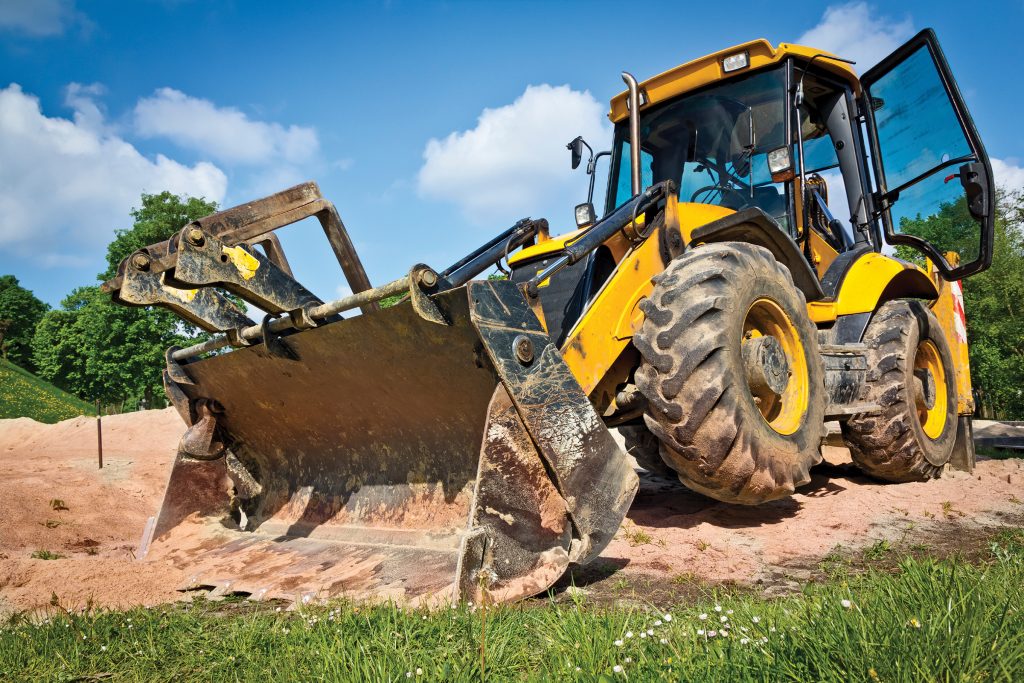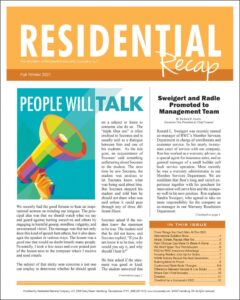Check out building/warranty/industry news, RWC announcements, upcoming events, etc.
Check out building/warranty/industry news, RWC announcements, upcoming events, etc.
Check out building/warranty/industry news, RWC announcements, upcoming events, etc.
Check out building / warranty / industry news, RWC announcements, upcoming events, etc.
 After decades of dedicated service and unwavering commitment, VP of Sales, Suzanne Palkovic, bid farewell to RWC & Affiliates this summer as she embarks on a well-deserved retirement.
After decades of dedicated service and unwavering commitment, VP of Sales, Suzanne Palkovic, bid farewell to RWC & Affiliates this summer as she embarks on a well-deserved retirement.
Sue began her career at RWC in October 1987 as our Pennsylvania sales representative after a short stint selling life insurance for another company. Her devotion to her job, her coworkers and the company led then Vice President of Sales Lynn Nelson-Probst to promote Sue to Assistant Sales Manager in 1994.
By virtue of her imagination and ability to see projects through to the end, Sue was promoted to Director of Research and Development in 2001, and in 2003 she was named Vice President of Marketing, Research and Development. After Lynn Nelson Probst retired, Sue became our Vice President of Sales in June of 2015, the position she held until her retirement. During her last eight years with the company, she managed our entire sales force and was a constant proponent of superior customer service for our builder members. Sue was a tireless worker for our company. Her strong leadership and keen understanding of the warranty marketplace contributed greatly to our companies’ success. We will miss her wit, her wisdom, her tenacity, and her dedication.
Sue is succeeded by our new National Sales Manager, Rich McPhee. Rich is new to the position, but not to the company, having served as a highly successful sales representative in the mid-Atlantic states for the last ten years. Sue had an opportunity to mentor Rich, and we are happy to report that he has hit the ground running.
Sue plans to travel, spend time with her family, and become more active supporting causes that are near and dear to her heart. She leaves RWC with our good wishes for a long, happy and healthy retirement and with heartfelt gratitude for many years of loyal service.
Check out building / warranty / industry news, RWC announcements, upcoming events, etc.
 Did you know that there is a specially designated number you should call before starting any digging projects? 811 is the (free) phone number you need to call before digging to protect yourself and others from unintentionally hitting underground utility lines.
Did you know that there is a specially designated number you should call before starting any digging projects? 811 is the (free) phone number you need to call before digging to protect yourself and others from unintentionally hitting underground utility lines.
There are millions of miles of buried utilities beneath the surface of the earth that we don't even think about but are vital to everyday living like water, electricity and natural gas. By simply calling, you'll help prevent unintended consequences such as injury to you or your family, damage to your property, utility service outages to the entire neighborhood and potential fines and repair costs.
Most contractors know that they need to find out what’s underground before beginning to break ground, but there may be some finer points of safe digging that you’re not aware of.
How exactly does this 811 thing work?
Simply call 811 from anywhere in the country a few days prior to digging, and your call will be routed to your local call center. Tell the operator where you're planning to dig. Your affected local utility companies will be notified about your intent to dig and will send locators to your dig site to mark the approximate location of buried lines with flags or paint.
When can I begin my digging project?
Wait for the marks! Utilities will mark their buried lines on your dig site. Most crews will arrive to mark your dig site with paint or flags within a few days and will make sure you know where to avoid digging so you don't hit buried utilities. Remember there may be multiple utility lines in the same area. Be sure to check your state laws for specific information. It's also a good idea to call and confirm that all affected utility operators have responded to your request and located accurately. (State laws vary on the process for confirmation; check with your local one-call center for more information.)
It's finally time!
Now it's time to roll up your sleeves and get to work - but respect the marks! Make sure to always dig carefully around the marks, not on them. State laws generally prohibit the use of mechanized equipment within 18-24 inches of a marked utility, which is called the “tolerance zone”. If you must dig near the marks, hand dig or use vacuum excavation to expose the facility. After exposing the facility, avoid using mechanized equipment within the same tolerance zone.
The marks provided by the affected utility operators are your guide for the duration of your project. If you are unable to maintain the marks during your project, or the project will continue past your request’s expiration date, please call 811 to ask for a re-mark. In addition, if excavation equipment is removed from a work site for more than two (2) business days, you must notify the call center again.
Also keep in mind that some utility lines may be buried at a shallow depth, and an unintended shovel thrust can bring you right back to square one - facing potentially dangerous and/or costly consequences. Don't forget that erosion or root structure growth may shift the locations of your utility lines, so remember to call again each time you are planning a digging job. Safe digging is no accident!
Source: call811.com and ccicomply.net
You’re a general contractor, a GC. Like it or not, you are responsible for everyone’s safety at your jobsites. That means anyone who may be there for any reason. Even trespassers who trip and fall over some debris left by your demo guy. That’s right. Even if you post “NO TRESPASSING” signs, you have some degree of care for any member of the public who is at your job site for any reason and gets hurt. What can I say? Life isn’t fair, then you get sued.
Any human activity involves risk. To really prevent having accidents at your jobsite you’d have to go back in time to that day when you decided to become a GC and decide to do something else. Until a time machine is invented, you’ll need General Liability (GL) insurance and you’ll want all your subcontractors to be adequately insured.
Why is GL insurance so important?
Let’s go back to the sloppy demo contractor who left the debris lying around for the trespasser to trip over.
If that demo guy doesn’t have insurance, your GL company will not only have to pay this claim; they will add the demo classification to your policy and charge you the extra premium. It’s hard enough to be sure your subs have enough insurance even when you require certificates each year.
For example, if one of your subs has a claim working for someone else and it reduces his/her limit of liability, that certificate you got a few months ago is suddenly out of date.
It says your subcontractor has $1,000,000 for each accident. Only now, the claim has reduced this amount to $500,000. Suppose one of your subcontractors had their GL coverage canceled or nonrenewed? If you’re listed as an additional insured on their policy you should receive a courtesy notice of cancellation… provided you asked for one and insisted it be shown on the certificate.
Either one of these possible scenarios can lead to a claim being made against your GL.
But what about that trespasser? Why should he be compensated for getting hurt while being illegally present on your jobsite? The answer has to do with the degree of responsibility you have to the public. Think of your own home as a jobsite. Let’s say you invite friends over to a Memorial Day picnic. You want them to be there. The last thing you want is for one of them to trip and fall over your garden hose laying in the yard because you failed to put it away.
The same is true for the delivery person and the guy who reads your gas meter. Then there’s the door-to-door salesperson or survey taker. You’re not as happy to see them, but you wouldn’t call 911 when they show up either. The one thing all these people have in common is a right to expect that you keep your yard, sidewalk and steps free of objects like your garden hose, stray toys and other debris when they come calling.
Even a burglar or a vandal is owed some degree of care. You can’t use excessive force to restrain a burglar and you can’t take the position that a trespasser should just watch their step if there is an unprotected hazard on your jobsite.
Failing to understand these things and take steps to minimize the hazards at your jobsite creates liability. Your subcontractors are your first line of defense against lawsuits.
Here are four things you can do to make sure your subcontractors are helping to reduce your chance of being sued:
• TRIP AND FALL HAZARDS that can’t be eliminated must be marked with signs, cones, reflective tape, etc., in such a way that they are obvious to the public.
• Require your subs to provide CERTIFICATES OF INSURANCE each year. These should show your subcontractors have their own GL coverage with limits of liability equal to yours.
• Insist that they name you as ADDITIONAL INSURED on their policies.
• Make sure they HOLD YOU HARMLESS in your contracts with them.
Never let up on your efforts to hold your subs to this high standard and to practice good jobsite preventive maintenance.
by Doug Davis, Eastern Atlantic Insurance Company
Click below to read about industry news, announcements, upcoming events, etc.
Stay up-to-date with the Warranty Company, Upcoming Events, & Industry News.







